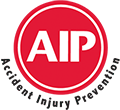The Workplace Hazardous Materials Information System (WHMIS) serves as Canada's national standard for communicating hazards in the workplace. Its core components include hazard classification, cautionary labelling on containers, provision of Safety Data Sheets (SDSs), and worker education and training programs.
WHMIS training is essential for keeping your workplace safe, and in this article, we will explore how it achieves this goal.
Understanding WHMIS
The Workplace Hazardous Materials Information System (WHMIS) is a legally mandated system in Canada that aims to ensure the safe handling, storage, and disposal of hazardous materials in the workplace. It was introduced to protect the health and safety of workers by providing them with information about the potential hazards of materials they may come into contact with during their jobs.
WHMIS is primarily comprised of three key elements:
- Labels - Hazardous materials are required to have labels that clearly indicate the product's identity, hazard class, and any hazard symbols. Labels also include precautionary statements and first aid measures.
- Safety Data Sheets (SDS) - Employers are obligated to maintain SDS for all hazardous products in the workplace. These sheets provide comprehensive information on the material, including its properties, hazards, safe handling procedures, and emergency response measures.
- Education and Training - Employers are required to provide adequate WHMIS training to their employees. This training ensures that workers can understand and apply the information on labels and SDS effectively.
Importance of WHMIS Training
WHMIS training is a fundamental component of ensuring workplace safety for several reasons:
- Awareness - WHMIS training creates awareness among employees about the hazardous materials they may encounter at work. This knowledge helps them recognize potential risks and take appropriate precautions.
- Proper Handling - Employees who receive WHMIS training are equipped with the knowledge and skills needed to handle hazardous materials safely. They learn about correct storage, handling, and disposal procedures to minimize the risk of accidents.
- Emergency Response - In the event of an emergency involving hazardous materials, trained employees are better prepared to respond effectively. WHMIS training covers emergency procedures, including first aid measures and evacuation protocols.
- Legal Compliance - Compliance with WHMIS regulations is mandatory for employers in Canada. Providing proper training to employees ensures that companies adhere to these regulations and avoid potential legal issues.
- Reduced Incidents - WHMIS training significantly reduces the likelihood of accidents and incidents related to hazardous materials. When employees understand the risks associated with these materials, they are more cautious in their handling and use.
- Improved Confidence - Employees who have undergone WHMIS training have increased confidence in their ability to work safely with hazardous materials. This confidence contributes to a positive safety culture in the workplace.
- Protection of Health - Ultimately, WHMIS training is about protecting the health of employees. Educating workers on the potential health hazards of materials they work with helps prevent illnesses, injuries, and long-term health problems.
AIP Safety’s WHMIS Program
AIP Safety offers a Classroom course designed to educate employees on the required WHMIS program for their workplace including worker education, workplace labelling, and material safety data sheets. Employees will also learn about the hazards associated with the chemical products in their place of work, and how they are to be used safely.
This course has been designed to meet and exceed Occupational Health and Safety standards and is applicable to any worker who works with chemicals on the job site. Upon successful completion of this course, participants will receive a 3-year certification in WHMIS.

